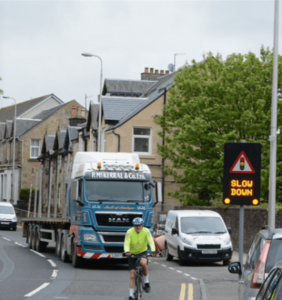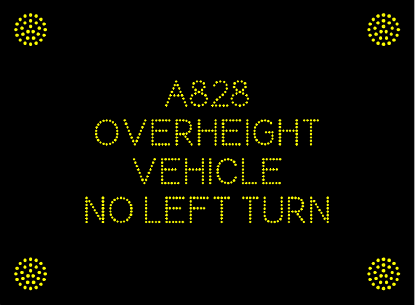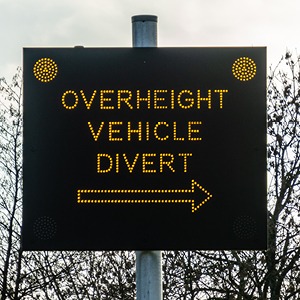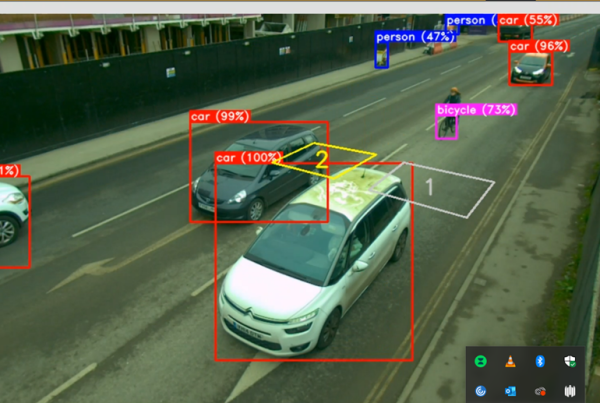Background
 Despite a number of traffic calming solutions already in place in the village of Fairlie in North Ayrshire, average speeds remained between 34 and 36mph in the heart of this village. In 2013, a Heavy Goods Vehicle crashed into a residential property close to the existing signalised junction, tragically killing the house inhabitant and causing a large amount of damage and disruption. Scotland TranServ decided to seek new ideas for reducing speeding drivers and achieving greater change in driver behaviour.
Despite a number of traffic calming solutions already in place in the village of Fairlie in North Ayrshire, average speeds remained between 34 and 36mph in the heart of this village. In 2013, a Heavy Goods Vehicle crashed into a residential property close to the existing signalised junction, tragically killing the house inhabitant and causing a large amount of damage and disruption. Scotland TranServ decided to seek new ideas for reducing speeding drivers and achieving greater change in driver behaviour.
Solution
Together with partners Clearview Intelligence and Dynniq Group, Coeval delivered an innovative scheme that combines Vehicle Activated Speed Warning Signs and Traffic Signals to safely stop drivers at the upcoming traffic lights if they exceed the 30mph limit; this steadies their progress through the village and positively changes driving behaviour.
Prominent Vehicle Activated Speed ‘Slow Down’ signs were put on display on the approach to the junction, with additional offside secondary signal heads fitted. Existing road markings were refreshed and the road surface upgraded with a high friction surface dressing.
Approaching vehicle speeds are calculated from magnetometer wireless vehicle sensors 140m from the stop line in both directions, avoiding the need for 280 metres of costly ducting.
Key Highlights
- Improves road safety through the village
- Changes driver behaviour with slower speeds encouraged
- Quicker installation times meaning less disruption to road users and village inhabitants
Vehicle speeds are wirelessly relayed, and if above 30mph the traffic signals are programmed to turn to red, stopping any speeding traffic and increasing overall journey time through the village. Complex operational configurations ensure that the traffic lights change to red in a safe and timely manner, and not in any way that could be dangerous to the road or pedestrian users of the junction.
Rather than opt for the more obvious ‘big stick’ approach of the installation of speed enforcement cameras, the scheme is aimed solely at positively influencing driver behaviour and is more of a ‘carrot’ for speed compliance. The idea has already been used to good effect for reducing speeding drivers in some European countries such as France, Portugal and Spain.
Download Case Study



